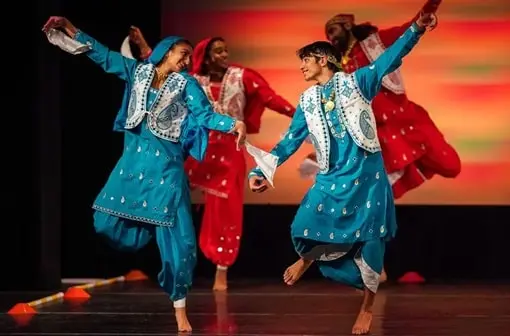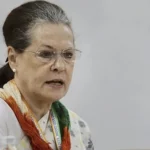Dances are the expressions of joy and happiness. Pakistan has a long cultural affinity with dances. In the different corners of Pakistan, different forms of dances have emerged. A part of these traditional dances are in relation with the religious practices of the country. Here we will be talking about these different kinds of dances and how they are unique in expression.
Bhangra – The Joyful Harvest Dance of Punjab:

Bhangra, a Punjabi dance, symbolizes joy, especially during harvest season. People dance to the dhol and traditional instruments in colorful clothes. Farmers’ excitement and thankfulness are reflected in Bhangra’s contagious zeal. Agriculture is fundamental to Punjabi bhangra. Successful harvests are celebrated with a lively dance. Dancers’ vibrant outfits enhance the spectacle and reflect the happy atmosphere. Dhol and traditional instruments make bhangra a collective expression of gratitude and joy.
Khattak Dance – A Warrior’s Elegance from Khyber Pakhtunkhwa:
Khattak dance, a Khyber Pakhtunkhwa specialty, blends martial techniques with graceful movements. This dance, usually done by men, has elegant footwork, captivating spins, and precise gestures. Elegant sword dancers show warrior grace and agility. The Khattak dance represents Pashtun valor and dignity, not merely a display. Khattak dance maintains Pashtun martial arts. Pashtun dancers’ rhythmic agility represents bravery. The precise footwork and spins memorialize the region’s heroic troops who protected their homeland. Khattak dancing to Pashto music is sensory. The dance’s rhythms and melodies represent Pashtun culture and increase its intensity. Swordfighting dance emphasizes Pashtun identity and maintains martial arts.
Attan – The Dance of Unity in Afghan and Pakistani Pashtun Culture:
In Afghanistan and Pakistan, Attan is a famous dance that represents Pashtun unity. Dansers form a circle and move together to show Pashtun unity. The dhol’s beat and traditional instruments’ melodies emphasize Attan. Athan is more than a dance, it represents Pashtun unity. Dancers’ circles represent the community’s unshakable bond. Each dancer step represents Pashtun heritage, principles, and awareness. With Pashtun roots, Attan goes beyond entertainment. This traditional dance is performed at weddings, festivals, and other pleasant events. Each twist, swirl, and synchronized move shows Pashtun power and camaraderie throughout generations.
Dhammal – The Spiritual Whirlwind of Sufi Mysticism:
Spiritual and sensual Sufi dance dhammal resonates with soul-stirring devotional music and is holy at Sufi saint sites and gatherings. The thrilling swirls of this happy dance represent a seeker’s spiritual path toward divine union. Pakistan’s Sufi spirituality is universalized by Dhammal, a dancing form that transcends location. Dhammal becomes a majestic symbol of devotion and spiritual connection at shrines and Sufi meetings. Sufi devotional music sets the stage for rhythmic, swirling dances that represent the Sufi path’s mysticism.
Kalash Dance – Preserving Ancient Traditions in Chitral Valley:
Traditional Kalash dances represent their long history in the picturesque Chitral Valley. Kalash dancing, with its graceful circular gestures, is significant to their culture. This dance and traditional music create a happy event that connects the Kalash to Chitral’s distant regions’ historic customs. The Kalash dance is a lively expression of communal culture. Kalash gracefulness and endurance are shown by the harmonic circle dancers. They dance in circles to represent their culture’s perpetual existence. Kalash dances reflect the community’s identity with valley rhythms and traditional music. Old music enhances the dance, presenting centuries-old tales and traditions. This rhythmic harmony connects the Kalash to their roots, forming a cultural tie with their ancestors.
Ludi – A Cultural Fusion of Dance and Song:
Ludi, a Punjabi dance, is a vibrant and vital wedding and celebration tradition. Ludi is a dynamic dance and music performance with strong handclaps and singing. The air is filled with joy as dancers create a circle and move in perfect tune to the music. Punjabi culture’s liveliness is captured via Ludi’s dancing and singing. A spirit beyond dance drives Ludi. Punjabis actively commemorate key occasions. Punjabi joy is shown in the elegant dancing and lively movements. Ludi is visible and audible thanks to handclaps and passionate singing. As dancers move, handclaps provide rhythm. Ludi is a dynamic cultural event that complements Punjabi celebrations due to the boisterous singing. Community is symbolized by circular Ludi dancers. People workout together and enjoy each step, building community. Punjabi culture values community and ludi is amusement and bonding.
Jhumar – The Graceful Dance of the Saraiki Belt:
Saraiki belt dance Jhumar is delicate and uses precise step and hand gestures. Traditional-costumed dancers perform a symphony to native instrument music. Jhumar goes beyond dancing, it’s a social phenomenon that introduces Saraiki culture to weddings and other gatherings. Jhumar, a lovely dance from the Saraiki belt, tells a tale of history and joy. Dancers’ superb footwork reveals their skill and grace. Elegant hand gestures make the dance a visual poetry honoring Saraiki culture. The dancers’ vivid clothes show Saraiki culture’s vibrancy. Traditional Jhumar costumes are beautiful and meaningful, connecting dancers to their heritage.
Conclusion:
The cultural weaving of Pakistan has its sweet spot amidst the dance forms. Be it the Bhanga Dances from Punjab, or the Kalash dance, each form is unique in its capacity and therefore, offers the joy of life through the movements. Such diversity is worthy of much interest in this case.
Santosh Kumar, the author behind IndiasStuffs.com, is passionate about sharing valuable insights on a variety of topics, including lifestyle, technology, and Indian culture.
Page Contents

